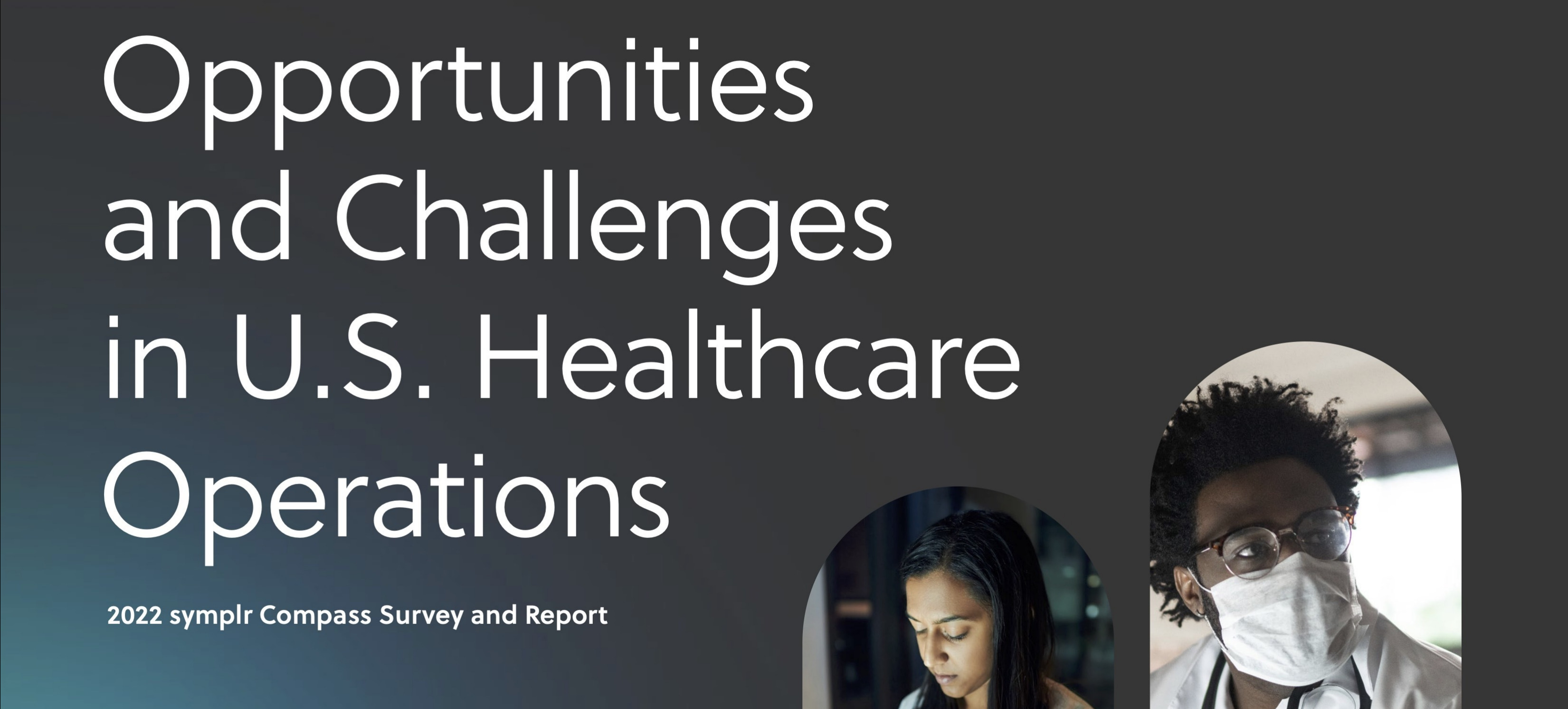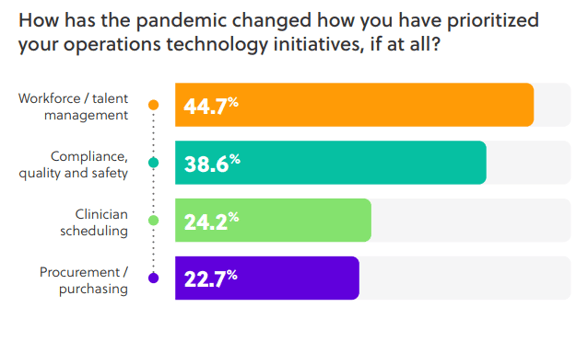Survey: CIOs Seek Simplified Healthcare Operations Technology

A symplr survey took the temperature of healthcare technology leaders, finding them motivated to digitally transform their healthcare operations despite financial pressure, widespread healthcare workforce problems, and other challenges.
The symplr Compass Survey, which gathered data from 132 top U.S. health systems, all members of the College of Healthcare Information Management Executives (CHIME), was launched in August. It captured input from technology decision makers about their organizations' healthcare operations solutions. The results are published in the report, “From Disparate to Dynamic: Opportunities and Challenges in U.S. Healthcare Operations.”
It's telling that 40% of respondents expect financial pressure to be the biggest threat their organizations will face in the coming year, yet they're ready to invest in enterprise-wide software solutions to connect and streamline healthcare operations. That's due in part to secondary issues they're working hard to address: among them clinician burnout/staffing challenges (31%) and cybersecurity/patient privacy (22%).
According to the symplr Compass Survey, hospitals appear eager to enlist the help of integrated software solutions to predict, connect, complement, and streamline human tasks—especially if those tools relieve unnecessary administrative burdens on clinicians and staff.
“Health systems do not want to rock the boat with
more technological change on an overworked
workforce. Being as undisruptive as possible from
a people perspective is important yet difficult.”
—Niel Oscarson, KLAS
High costs of disconnected point solutions
symplr's research focused on technology use for healthcare operations functions—including workforce management, provider data management, contracting and spend (supply chain) management, facility access, quality, safety, and compliance. Most health systems symplr polled have an excess of disparate point solutions/systems specific to healthcare operations that could negatively impact finances, compliance, and workforce focus. For example:
- 24% use between 151-500 solutions
- 34% of respondents use 50-150 solutions
- 41% use between one and 50 solutions

There is an opportunity to streamline and automate healthcare operations solutions to combat financial pressure, burnout, and other challenges. For example, benefits of consolidating and integrating business-critical solutions to achieve a more streamlined technology stack include:
- Fewer vendors for health system CIOs to manage
- Increased technological efficiency, consistency, and security
- Increased time for clinicians and staff to focus on providing high-quality patient care.
- Potential reduction of burnout through automation and the reduction of administrative tasks
"The health and well-being of all clinical staff, in particular the nursing staff, is central to ensuring safe, timely, patient-centered, and equitable care.”
—Deborah Zimmermann, DNP, RN, NEA-BC, FAAN, The DAISY Foundation CEO & President-elect/Chair of the American Organization for Nursing Leadership
Making people a priority
Deborah Zimmermann, DNP, RN, NEA-BC, FAAN, CEO of The DAISY Foundation, President-elect and Chair of the American Organization for Nursing Leadership, said in the report, "The health and well-being of all clinical staff, in particular the nursing staff, is central to ensuring safe, timely, patient-centered, and equitable care.”
Most (84%) technology leaders responding to the symplr Compass Survey understand that a streamlined IT infrastructure is an important factor in their ability to support and retain clinicians. They are optimistic about the future role of healthcare operations technology.
Michele Strickland MBA, BSN, RN, Director of Informatics and Applications at Asante, said, "Clinical collaboration among multidisciplinary teams is essential to improving care quality and creating efficient care delivery with very tight resources, and it is achievable by using the right technologies.”
What's more, technology leaders are taking action to prioritize their technology initiatives, as evidenced in their priorities post-COVID-19:

Other industry reports, such as a Bain & Company/KLAS Research collaborative, which symplr CEO BJ Schaknowski recently referenced in a blog, validate the symplr Compass Survey findings.
Bain/KLAS found that 63% of provider organizations seek to reduce the number of third-party software solutions in their tech stacks in the next year. Respondents to the Bain/KLAS survey were similarly motivated by financial pressures and challenges, with nearly 80% citing labor shortages, inflation concerns, or specific organizational situations as the motivation behind new software investments.
In the symplr Compass Survey Report, KLAS Research and Strategy Director Niel Oscarson said, "Health systems do not want to rock the boat with more technological change on an overworked workforce. Being as undisruptive as possible from a people perspective is important yet difficult."
Technology leaders—CIOs, CMIOs, CNIOs, and others—are tasked with managing the technology that enables their hospitals' or health systems' clinicians to effectively treat patients. Their roles and the tools they manage have become more important during the COVID-19 pandemic and subsequent healthcare workforce shortage, as technology was and continues to be leveraged to fill critical care gaps.
There is abundant opportunity for healthcare organizations to adopt dynamic, efficient healthcare operations technology that automates and empowers the workforce to focus on and deliver quality patient care.

